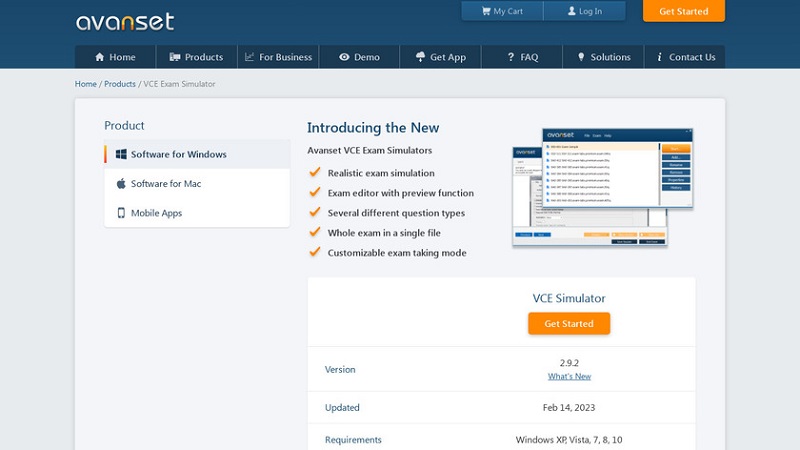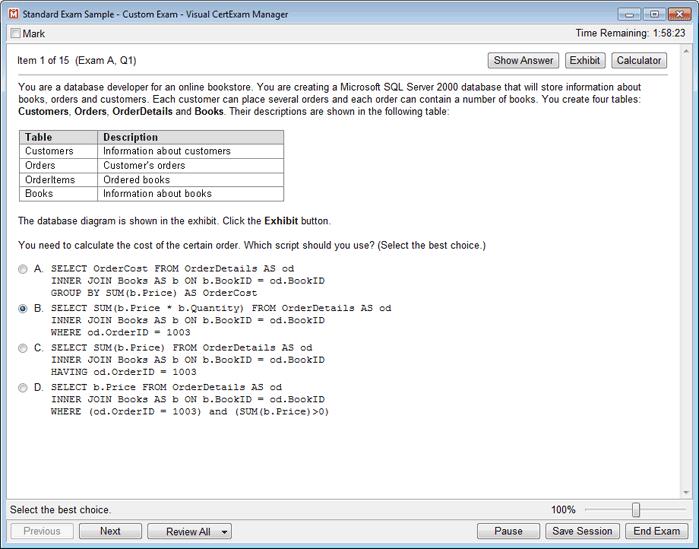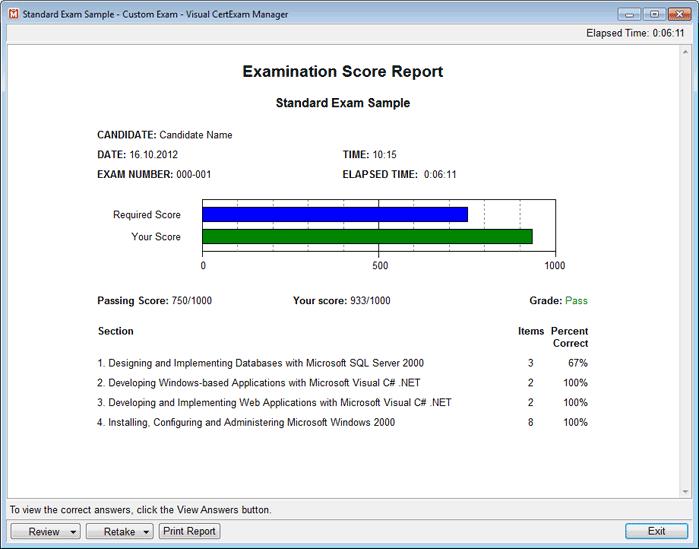A Complete Guide to VCE Files

TechsPlace | VCE, which stands for Visual Cert Exam, is a file format associated with the Visual Cert Exam Suite. This software is commonly used for creating, opening, and practicing with practice exams and tests. Exam preparation and evaluation can be facilitated by using the questions, answers, explanations, and other pertinent information found in VCE files. Here, we will go over the many facets of VCE files in guide to VCE files, including their use, creation, and potential advantages.
Introduction to VCE Files

The file format VCE, or Virtual Certification Exam, is connected to the well-known certification test program VCE Exam Simulator. People who are getting ready for different certification examinations, such as IT certifications, professional licensing exams, and academic assessments, utilize it a lot. With the help of VCE files, applicants may evaluate their preparedness for the test and become acquainted with the exam environment. VCE files are made to mimic the format and structure of real exam questions.
What is a VCE File?
A VCE file is essentially a database of exam questions and answers, along with other relevant components such as question types, exam duration, and scoring criteria. These files are created using VCE Exam Simulator or other compatible software, and they can be shared and distributed among exam candidates for collaborative study and practice. VCE files are typically organized into sections or categories based on the exam syllabus or content domains, making it easier for candidates to focus on specific areas of study.
Benefits of Using VCE Files for Exam Preparation
There are several benefits of using VCE files for exam preparation. Some of the main benefits of using VCE files for exam preparation are discussed below:
1. Accessibility
Accessibility is one of the main benefits of utilizing VCE files to prepare for exams. Devices like as laptops, tablets, cellphones, and personal computers may all readily access and use VCE files. This implies that users are no longer limited to a certain place or gadget and may study and prepare for their tests whenever and wherever they like. For people with hectic schedules or those who like to study on the move, VCE files are an appealing alternative because of the flexibility and convenience they offer.
2. Interactivity
Another key benefit of VCE files is the interactivity theyprovide. In contrast to conventional study resources like books or static PDFs,multiple choice questions, drag-and-drop tasks, and simulations are frequentlyincluded in VCE files. Users may test their knowledge and abilities in a moredynamic and useful way because of this interaction, which also makes learningmore fun and engaging. Through interactive elements, learners may activelyengage with the information and strengthen their comprehension and recollectionof the test material.
3. Customization
VCE files offer a high degree of customization, allowing users to tailor their study experience to their individual preferences and needs. User scan create their own VCE files or download existing ones from reputable sources, and then customize various aspects such as the question order, time limits, and answer explanations. Converting VCE files to PDF and many other formats is also very easy. Additionally, the software used to open VCE files often provides options for adjusting the difficulty level, randomizing questions, and focusing on specific topic areas.
4. Effectiveness
The effectiveness of VCE files for exam preparation is evident in their ability to simulate the actual exam environment and conditions. Many VCE files are designed to closely mimic the format, structure, and difficulty of the official certification exams they are meant to prepare candidates for. By practicing with VCE files, users can familiarize themselves with the exam interface, timing constraints, and types of questions they are likely to encounter. This simulation of the real exam experience can help reduce test anxiety, increase confidence, and improve performance on the actual exam day.
5. Community and Collaboration
In addition to the individual benefits of using VCE files, there is also a sense of community and collaboration that surrounds their usage. Online forums, social media groups, and dedicated websites provide platforms for VCE users to connect, share resources, and support each other in their exam preparation journey. This sense of community can be valuable for exchanging study tips, accessing additional practice materials, and seeking guidance from those who have already taken the exam. Furthermore, collaborative efforts to create and verify VCE files contribute to the overall quality and reliability of the study resources available to users.
Finding Reliable Sources for VCE Files
Making sure the material is real and credible is crucial while searching for trustworthy sources for VCE files. Students can get VCE files through a variety of channels, so it’s important to choose your sources carefully. One of the most reliable sources for VCE files is official certification exam websites and platforms. These platforms often provide authentic and updated VCE files that align with the current exam syllabus and content.
Additionally, reputable educational websites, forums, and communities dedicated to certification exam preparation can also serve as reliable sources for VCE files. These platforms often have a community of experts and peers who share VCE files, discuss exam strategies, and provide valuable insights into exam preparation. It is important to verify the credibility of the sources and ensure that the VCE files obtained from these platforms are accurate and up to date.
Furthermore, some commercial vendors and publishers offer VCE files as part of their study materials and resources. While these sources may require a purchase or subscription, they often provide high-quality VCE files that are meticulously curated and reviewed by subject matter experts. However, students should exercise caution and thoroughly research the reputation and track record of these vendors before investing in their VCE files.
Tips for Creating and Editing VCE Files
Creating and editing VCE files requires attention to detail, accuracy, and adherence to exam guidelines. Here are some tips for creating and editing VCE files:
1. Gather Exam Questions from Credible Sources
First and foremost, it is essential to gather exam questions from credible sources, such as official exam guides, practice tests, and reputable educational resources. The questions should accurately reflect the exam content and cover a wide range of topics and difficulty levels to provide a comprehensive study experience.
2. Pay Close Attention to the Formatting
When editing VCE files, students should pay close attention to the formatting, including question types, answer choices, and explanations. It is crucial to adhere to the VCE file format guidelines to ensure compatibility with VCE player software and other exam simulation tools. Additionally, students should review and proofread the content to eliminate any errors or inaccuracies that may impact the effectiveness of the VCE file as a study resource.
3. Incorporate Multimedia Elements
Moreover, incorporating multimedia elements such as images, diagrams, and references can enhance the quality and interactivity of VCE files. Visual aids can help clarify complex concepts and reinforce understanding, making the study experience more engaging and effective for students.
Best Practices for Studying with VCE Files
Studying with VCE files requires a strategic approach and disciplined study habits to maximize the benefits of exam simulation and self-assessment. To make the most of VCE files, students can adopt the following best practices:
- Organize VCE files by topic or exam section: Categorizing VCE files based on the exam syllabus or subject areas can help students focus their study efforts and target specific areas of improvement.
- Schedule regular practice sessions: Students who practice often and methodically using VCE files will become more used to the style of the test, become more adept at managing their time, and gain confidence while answering exam questions.
- Use VCE files for self-assessment: VCE files are a useful tool for tracking progress and self-evaluation. Students may evaluate their performance, mimic test settings, and pinpoint areas that need more study and practice.
- Seek clarification and discussion: In cases where students encounter challenging or unclear questions in VCE files, seeking clarification from peers, instructors, or online communities can provide valuable insights and explanations.
- Supplement VCE files with other study materials: While VCE files are a valuable study resource, it is important for students to complement their study approach with other materials such as textbooks, reference guides, and interactive learning resources to gain a comprehensive understanding of the exam content.
VCE File Compatibility Across Platforms
VCE files are compatible across a lot of platforms. Let us look at the platforms VCE files are compatible with:
1. Compatibility with Windows
Candidates can use a range of software programs to open and interact with VCE files on Windows-based devices. VCE files are compatible with the Windows operating system. The Visual Cert Exam Suite is one of the most widely used applications for reading VCE files on Windows. It offers an easy-to-use interface for practicing test questions and replicating exam settings.

2. Compatibility with Mac
Although VCE files are mostly related to the Windows operating system, Mac users may view and utilize VCE files with the aid of certain software programs. Through the use of virtualization software, such as VMware Fusion or Parallels Desktop, Mac users may run Windows-based apps on their Macs, making Windows-compatible VCE exam simulators usable.
3. Compatibility with Linux
The use of virtualization software or third-party VCE file readers for Linux operating system will also help Linux users to work with VCE files. In their Linux system, windows-based VCE exam simulators can be used by Linux users through running Windows virtual machine on software such as VirtualBox or Wine.
4. Compatibility with iOS
For candidates who prefer to use iOS devices, the compatibility of VCE files with this platform are a significant consideration. While there are limited options for directly opening VCE files on iOS due to the platform’s restrictions, there are alternative methods available. Some VCE exam simulator software providers offer mobile apps specifically designed for iOS, allowing users to access VCE files on their iPhones or iPads.
5. Compatibility with Android
Applicants who use Android devices to study for exams must ensure that VCE files work with the Android platform. Fortunately, Android users may access and interact with VCE files on their smartphones and tablets with VCE exam simulator apps that are available on the Google Play Store.
Future Trends and Developments in VCE File Technology
The future of VCE file technology is expected to be shaped by a number of emerging trends and innovations. The incorporation of machine learning and sophisticated analytics features into VCE software is one of the biggest developments. Exam preparation and practice may be made more successful by using these technologies, which allow VCE software to provide users with individualized study recommendations, performance insights, and adaptive learning experiences.
Additionally, the evolution of VCE file formats may involve the adoption of open standards and interoperable formats to promote compatibility and accessibility across different VCE software platforms. This trend aligns with the broader movement toward open education resources and interoperable e-learning technologies, enabling seamless sharing and usage of VCE files across diverse educational environments.
Furthermore, how VCE file technology develops in the future may be influenced by developments in safe and decentralized technologies like blockchain. Blockchain-based solutions can help mitigate some of the security and integrity issues related to conventional file storage and distribution techniques by providing VCE files and the data they contain with improved security, transparency, and resistance to tampering.
Conclusion
VCE files offer a dynamic and flexible method of test preparation as technology continues to play a major role in education and professional growth. By leveraging the features and capabilities of VCE files, individuals can engage in meaningful and targeted practice that fosters confidence, competence, and success in their academic and professional pursuits.

Author and publisher at techsplace.com.





